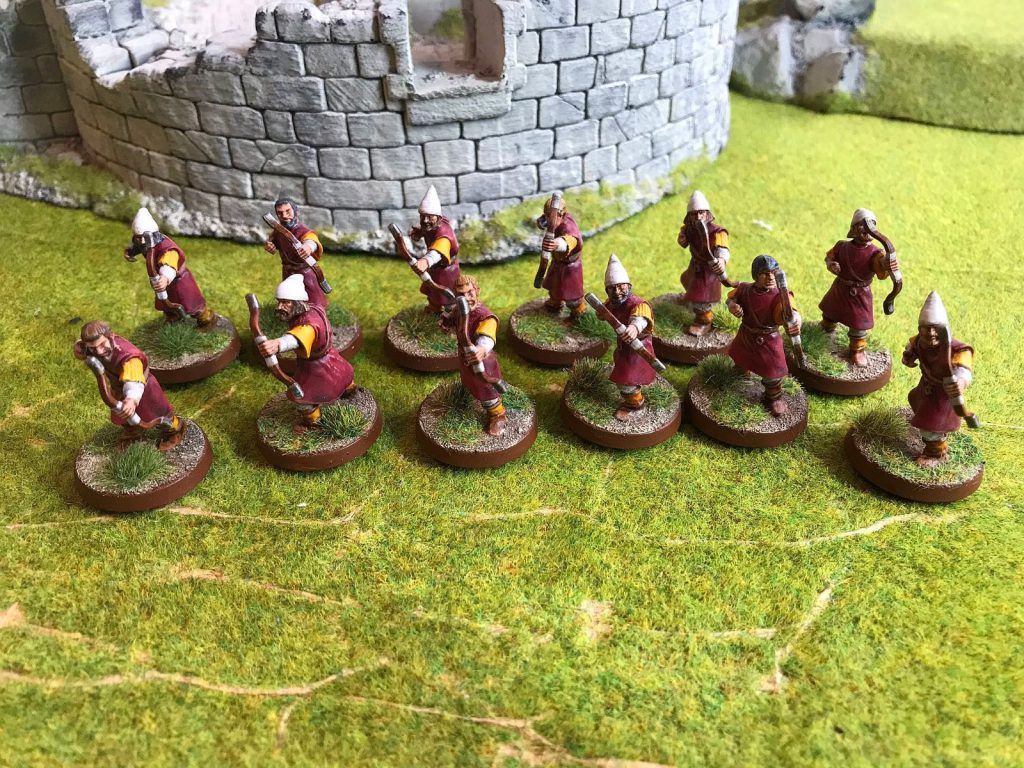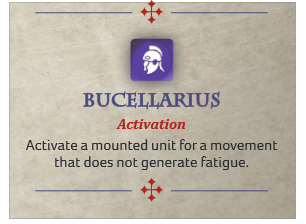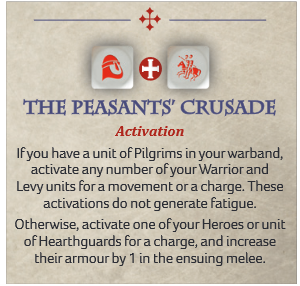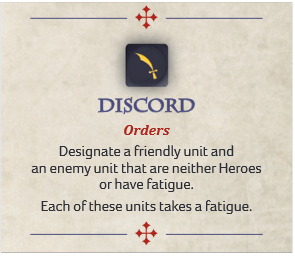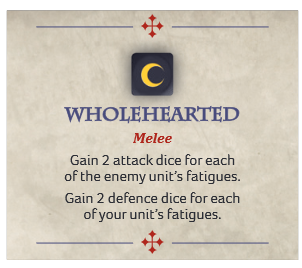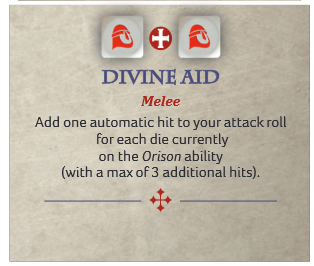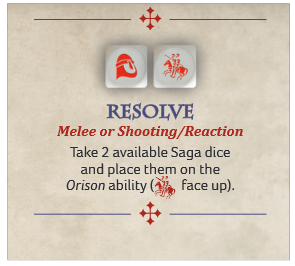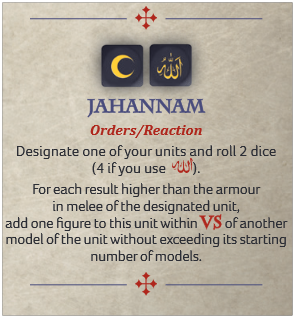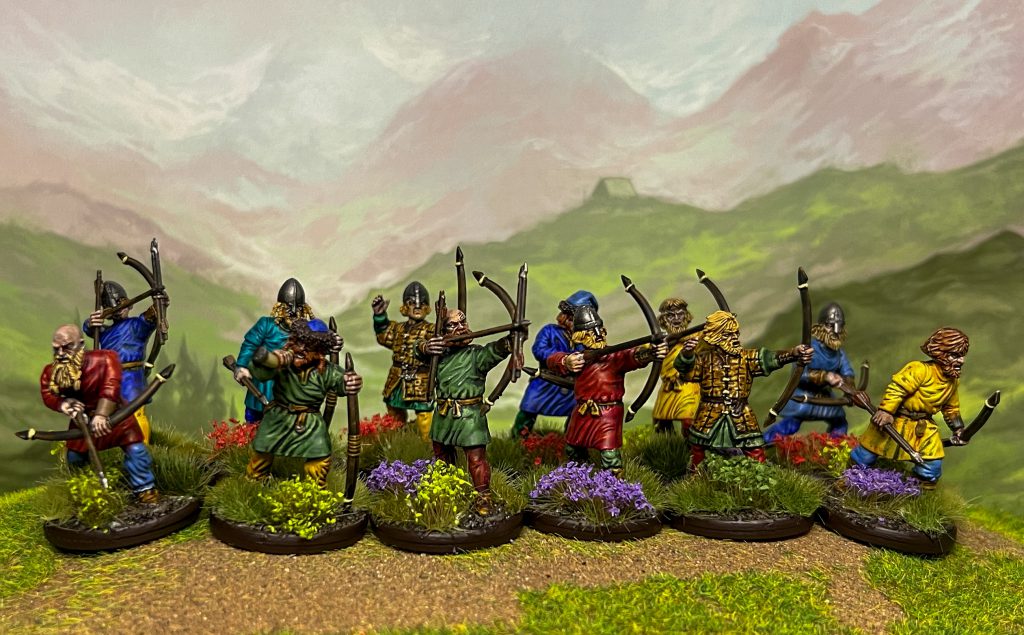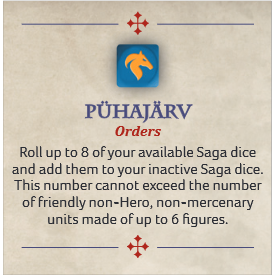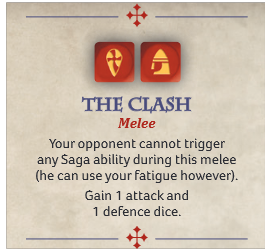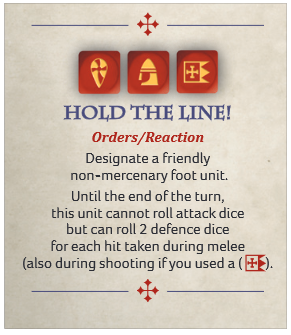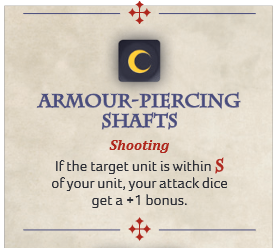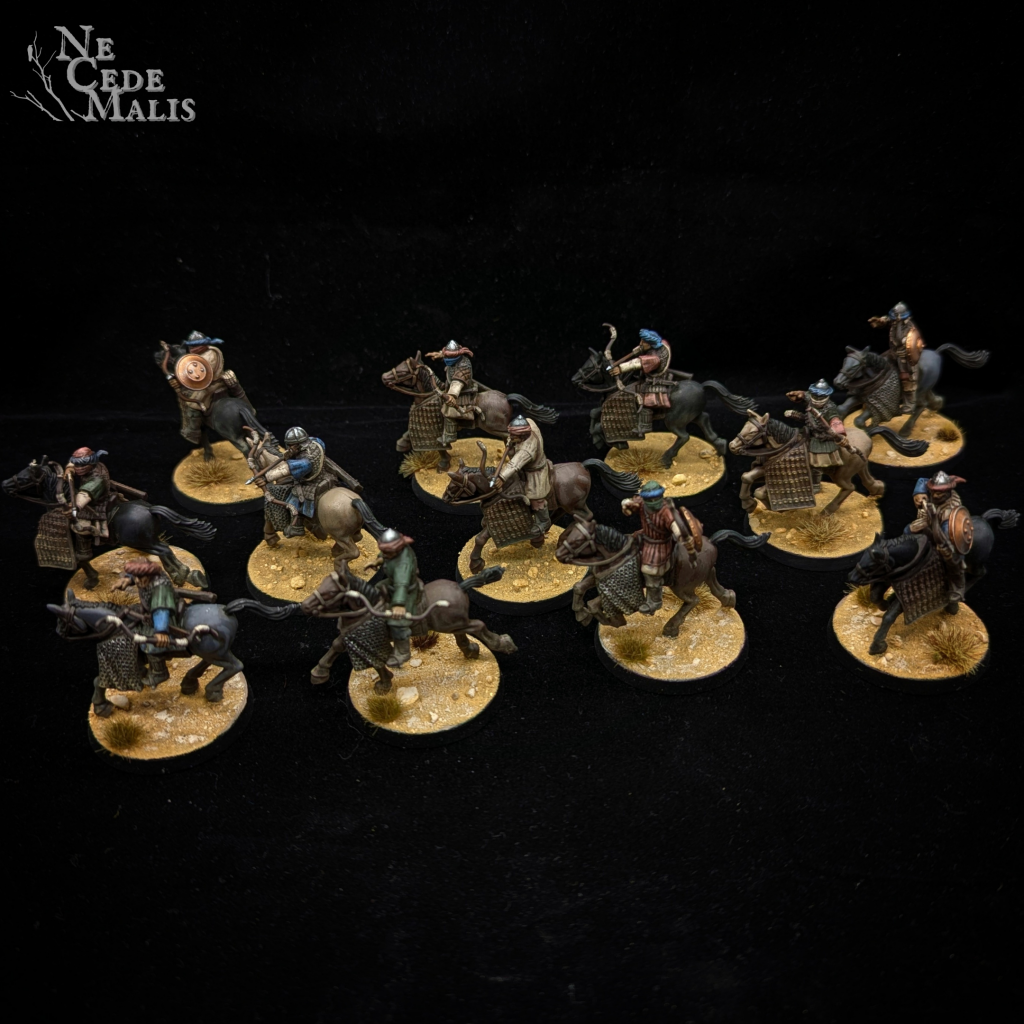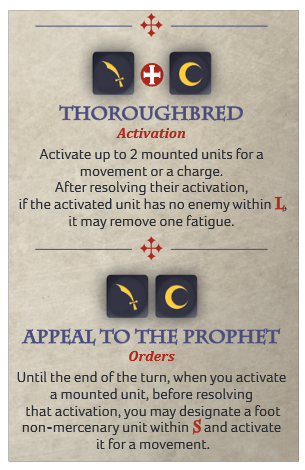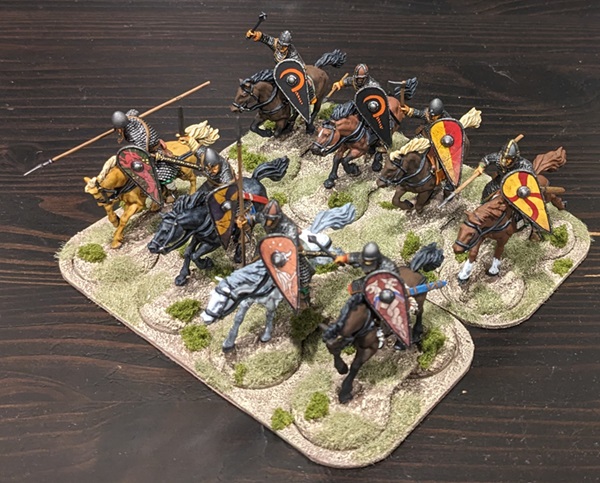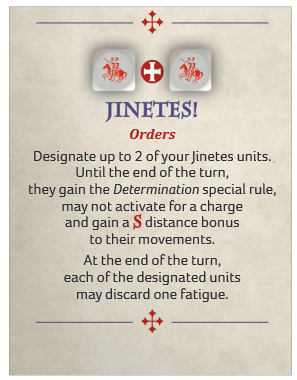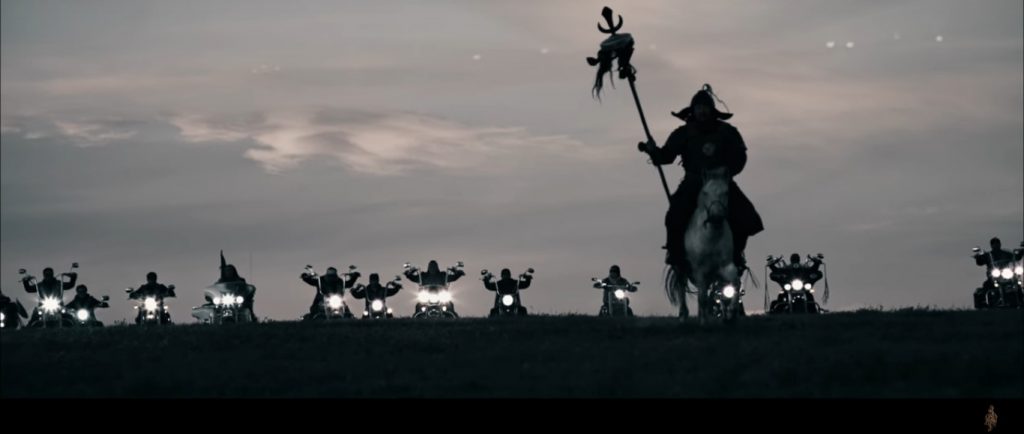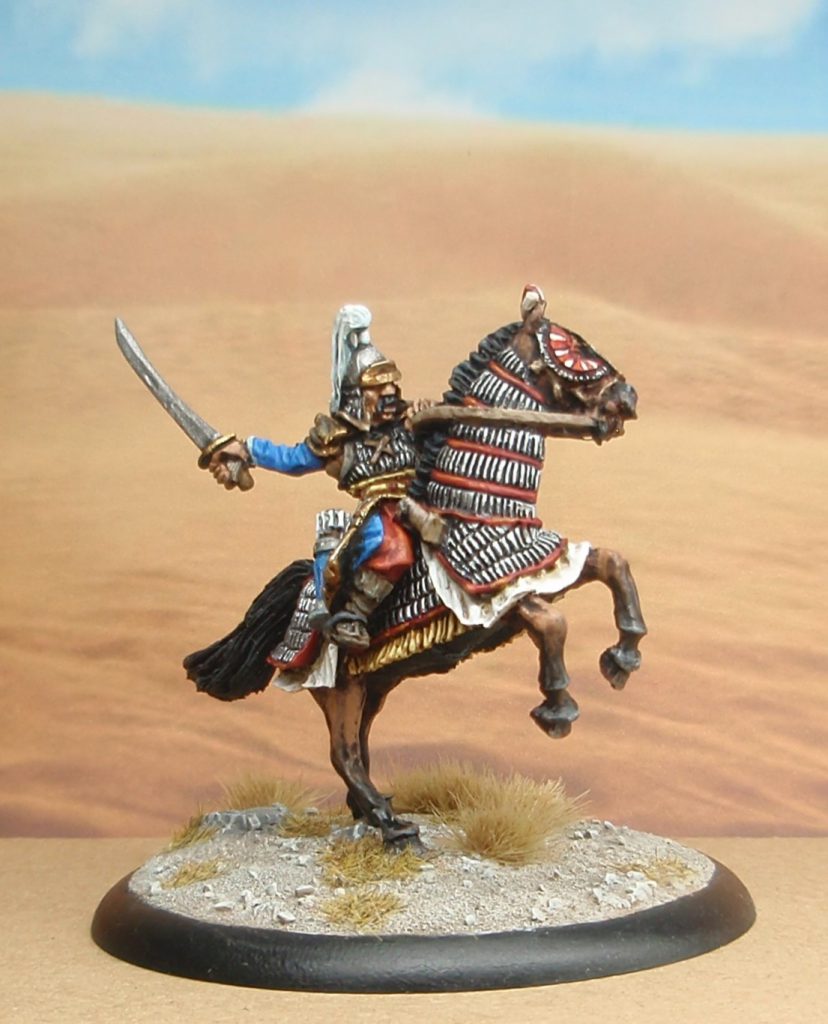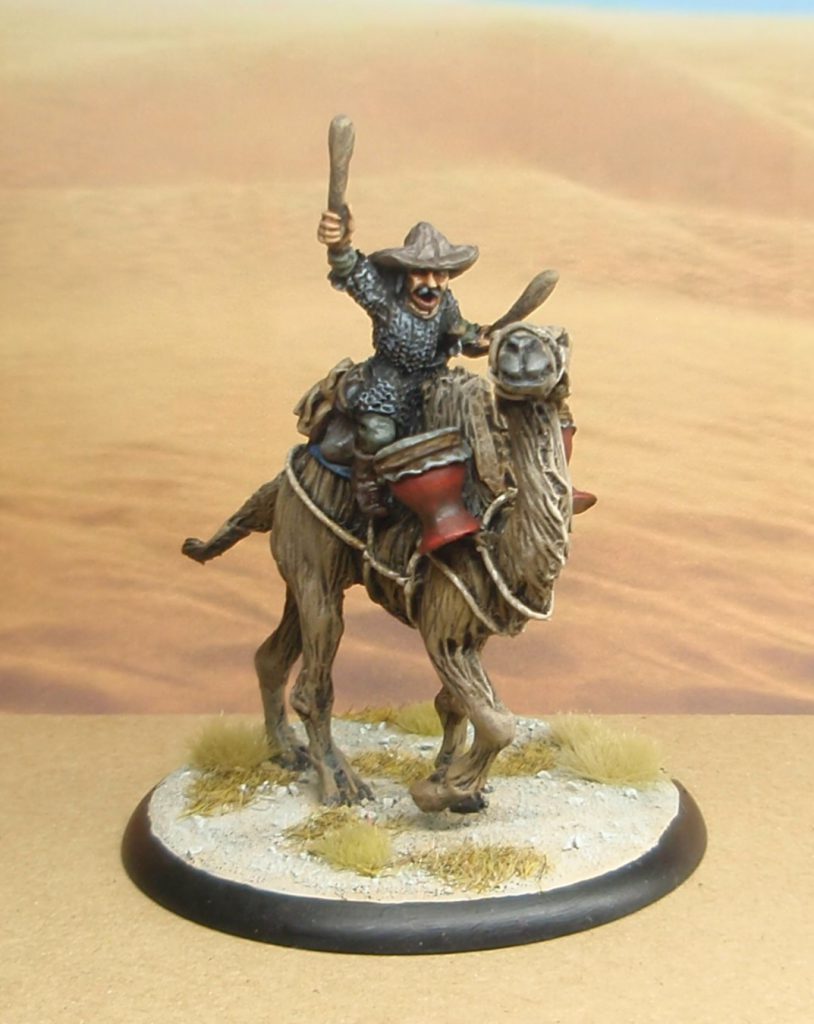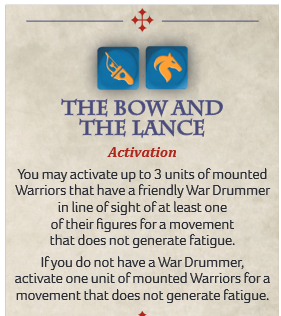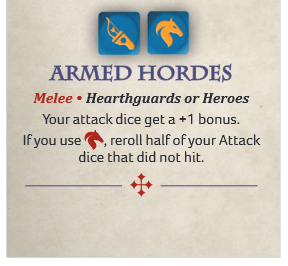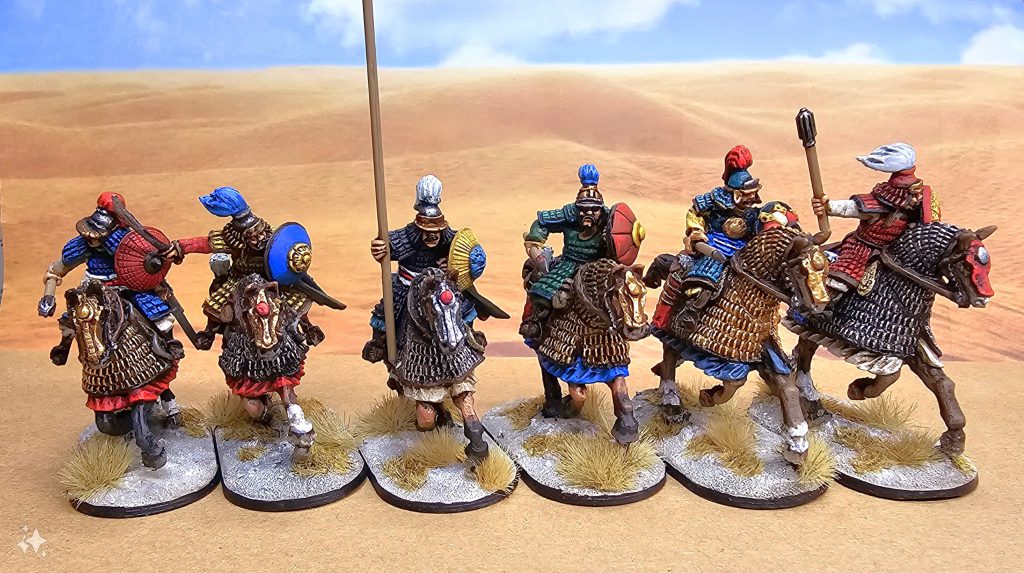Your tabard hangs wet around your shoulders, heavy with sweat and blood. The final rays of sunlight can barely be seen, blocked out by the vast trees looming around you. The last of your brothers died in the ambush at the crossroads, where you turned and fled as Baltic tribesmen poured out of the trees, howling like demons. Now you’re alone, and the woods around you aren’t quiet – you can hear the pagans baying for your blood, and the sword in your hand is already notched…
Okay, so you’ve started SAGA. You’ve played Age of Vikings – you’ve built the Viking warband, looked covetously at the Norman and Carolingian warbands (all those horses…), maybe even flirted with more esoteric factions like the Pagan Rus and the Jomsvikings. You’ve probably played Age of Invasions, since you can use a lot of the same miniatures in Vikings in Invasions.
And now, maybe, you’ve been looking for a fresh itch to scratch, and like so many before you, you’re hearing the call of the Crusades period. It’s an amazing setting – both for historians and for wargamers – and because of that, it’s this author’s favourite SAGA book by a country mile. It’s one of the richest books in SAGA for sheer gameplay options, faction diversity and modelling opportunities. And on top of all that it’s also one of the most educational periods (or was for this author) to learn about – because it touches on areas (geographical and thematic) that traditional Western wargames may not always focus on.
Editors note: It’s SAGA Summer! Enjoy our coverage during the raiding season as we take a look at the factions, miniatures, and everything else you need to get started playing SAGA and earning massacre points.
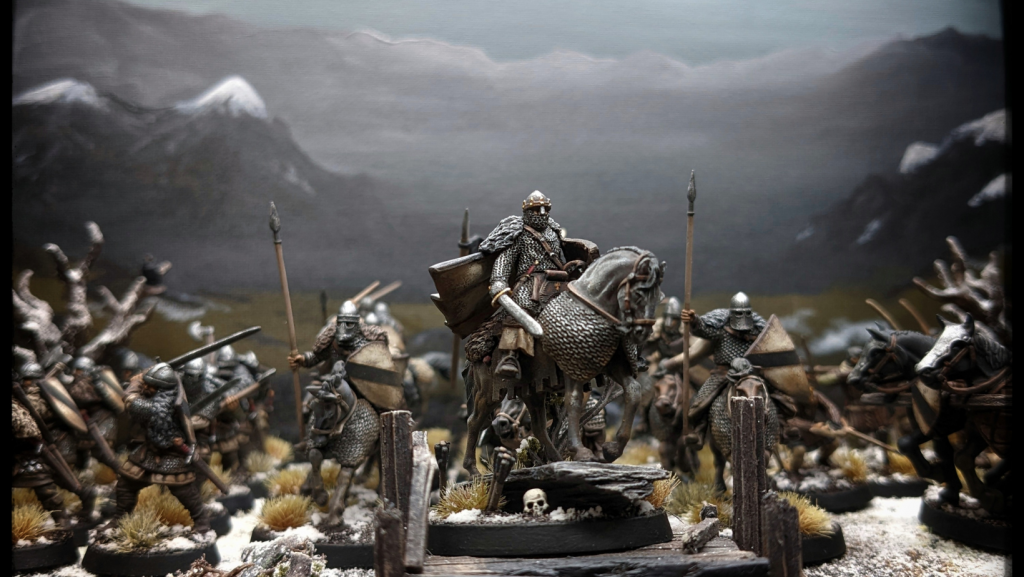
What’s in the Book
Age of Crusades covers the widest geographical area of any SAGA book to date, and arguably the largest possible number of peoples (although this is a complex challenge for a game as simple as SAGA to cover in a satisfying way – more on that later).
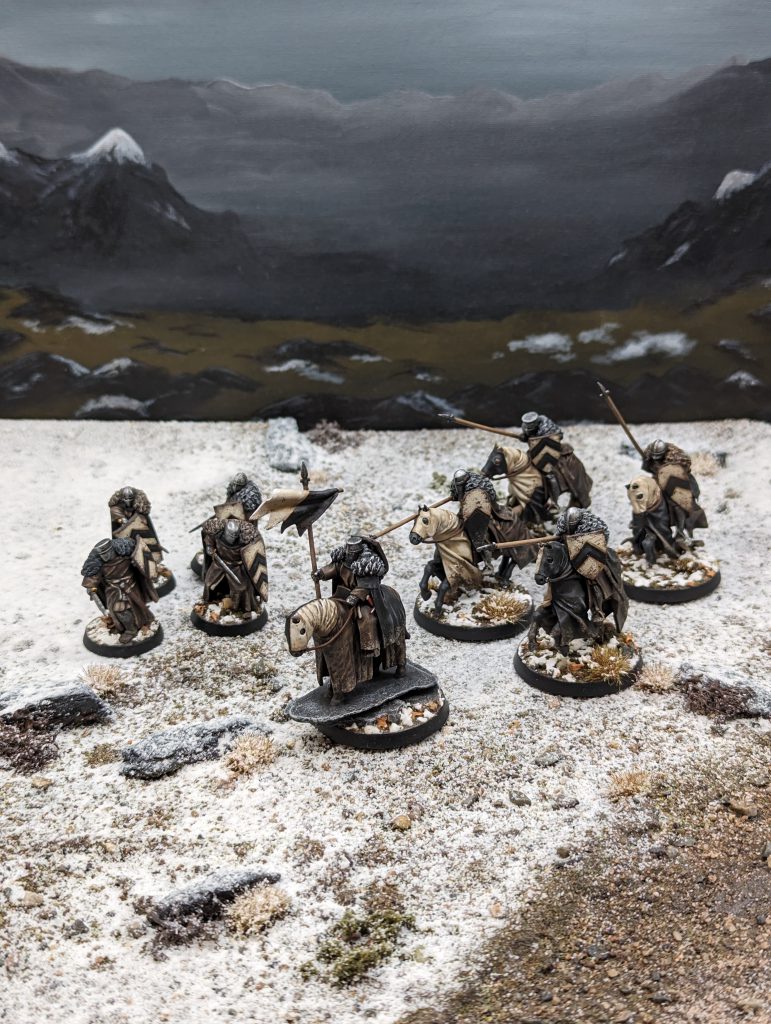
***Author note: Age of Crusades has just received a much-awaited, long-delayed 2024 FAQ update by its creators at Studio Tomahawk which you can find here. This came alongside a much smaller rulebook update (which you can also find here) which changed how javelins work – which significantly affects some factions. Everything in this article refers to the game as it is now, updated by the 2024 FAQs – and the author will signpost where the 2024 FAQ fundamentally changed a given faction, so you know what you’re getting into!
In the book are rules for twelve factions – just like in Age of Vikings – as well as the by-now-familiar ‘Old Friends, New Enemies’ section, which lets you run some factions from Age of Vikings and Age of Invasions in the Crusades setting.
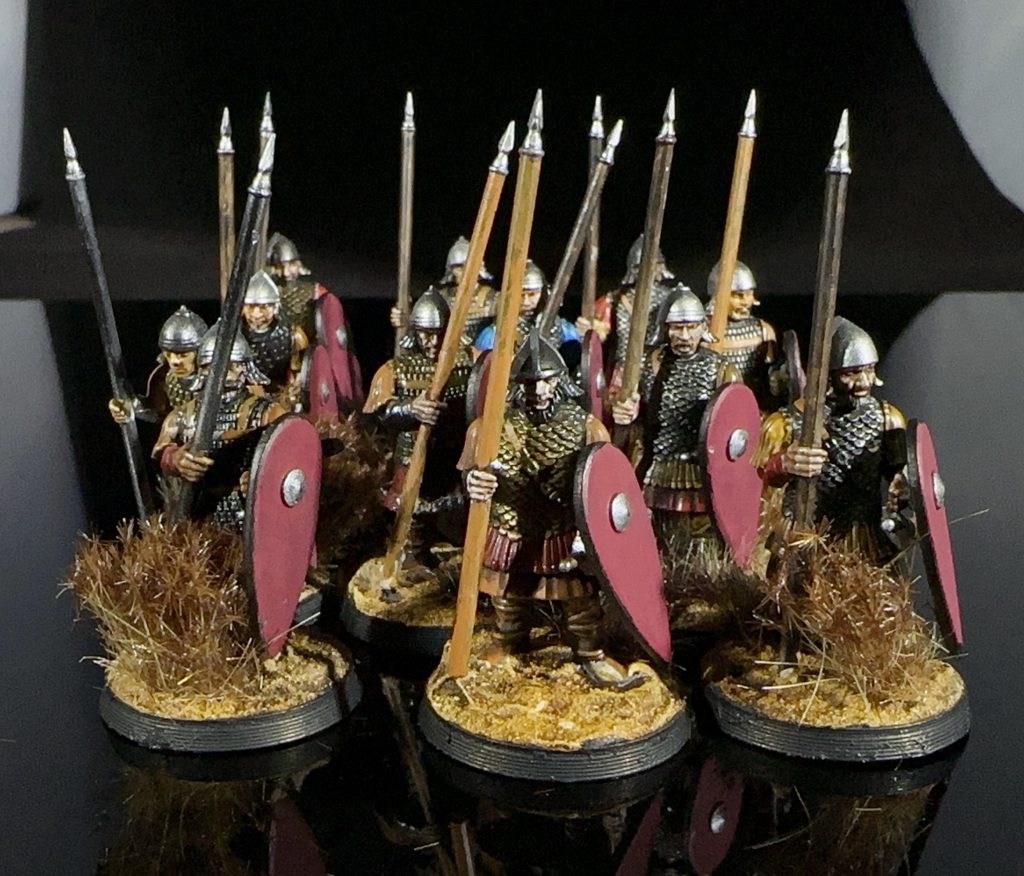
Here’s who you’ve got:
- The Byzantines
- The Crusaders
- The Ordensstaat (or “order state” in English – this is the Teutonic Order at the apex of its might in the Baltics and Eastern Europe)
- The Moors
- The Milites Christi (“solders of god” – the Military Orders themselves, the Knights Templar and Hospitallers, and other lesser Orders, whether in the Holy Land or beyond.
- The Mutatawwi’a (difficult to find a comprehensive translation – but this faction represents the Islamic foil to the Milites Christi. Devout soldiers of Islam defending their home against the invading Christians, defined by their religious fervour and zeal)
- The Pagan Peoples (a very catch-all term for the last pagans in Europe, nominally around the Baltics and parts of Eastern Europe)
- The Polish
- The Eastern Princes (another catch-all term for the Rus principates and the Lithuanian dukedoms)
- The Saracens
- The Spanish
- The Mongols
- Old Friends, New Enemies: Cumans (using the Hun rules from Age of Invasions), Pagan Raiders (Saxons from AoI), Cilician Armenians (Last Romans from AoV), Árpádian Hungarians (Normans from AoV).
- A Matter of Peace and Faith: The Cathars and De Montfort’s Crusaders, representing the two sides of the Albigensian Crusade.
So all in all, you’ve got the twelve core factions plus four extra ones from Vikings and Invasions and two bonus sub-factions to round out your options, covering a staggeringly vast area from the distant steppes of Mongolia, as far south as the Holy Land, to the shores of Western Europe.
Advisory note: The eagle-eyed will probably note at this point that Age of Crusades has taken a broad approach with its factions. There are no specific rules for the English, the Scots, the Italians, the Syrians, the Berbers, nor for the different peoples of the Baltics. Factions like the Spanish and Polish stick out as unusually specific choices. That’s arguably one of Age of Crusades’ weaknesses – at times, it can paint its factions with too broad a brush. On the other hand, it gives incredible latitude for creativity and hobby freedom in what you build. The author knows at least one fellow hobbyist conceptualising a Malian (!) warband using the Crusader board, for example. The main thing to remember is that SAGA is about historical archetypes through the lens of heroic storytelling, and Age of Crusades gives you a sandbox with which to set up your own historical fantasies.
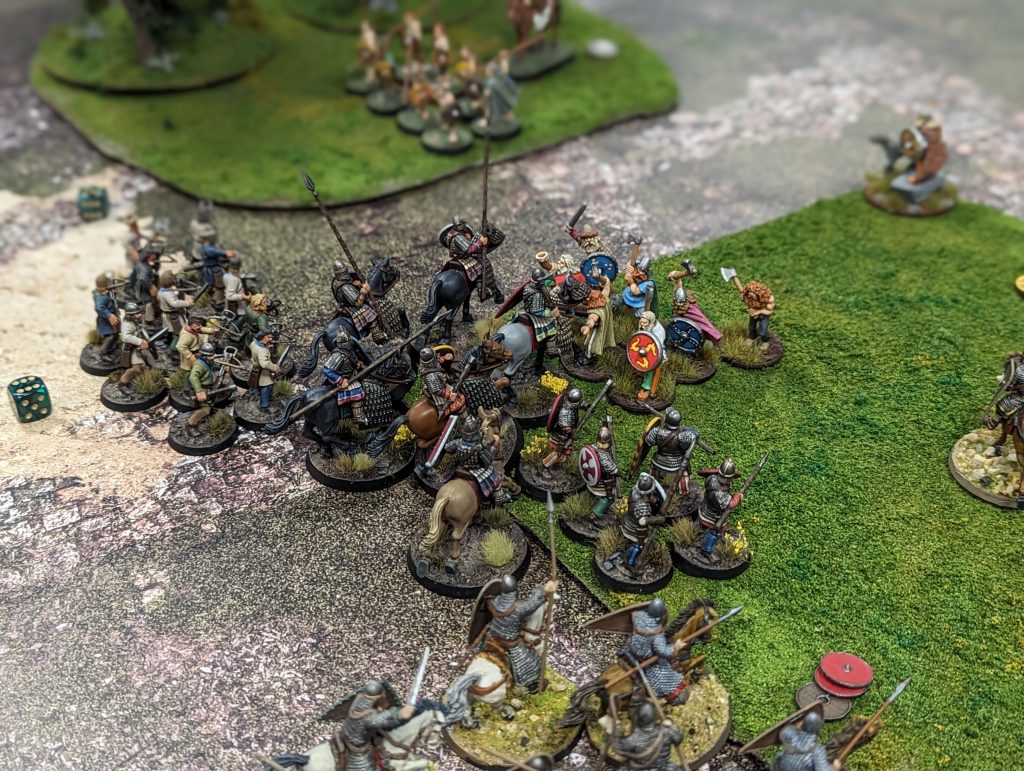
As with AoV and AoI, Crusades also includes fun, optional rules, like the ‘Acts of Faith’ – allowing your Warband to choose powerful additional objectives depending on their historical faith – which really ooze flavour and are just begging to be used in campaign play.
There are also rules for Mercenaries, and Age of Crusades boasts some of the most unique and fascinating Mercenaries across the SAGA setting. This article won’t cover Mercenaries for now, in the interests of not turning this into a book in its own right – but we might come back later to do a separate article on them as they’re fantastically varied and offer loads of cool gameplay options and modelling opportunities.
So, that’s it for the brief overview – let’s get on to what you came here for; the factions!
The Byzantines

- Who they are: The Byzantines. The Eastern Roman Empire. The defenders of Constantinople. The Byzantines are the very last of the ancient Roman Empire, and they’re here to show you just why their eastern dominion endured for a thousand years after the fall of Rome.

Byzantine archers. Credit – Rick H - What they’re good at: As befits the historical Byzantines, in SAGA these guys are an absolute brick wall. They are an incredibly powerful faction on the defensive, with rows upon rows of well-trained Levies interlocking with lightly-armoured units of cavalry archer Warriors to weaken the enemy before they make it into contact with the Levy shieldwall. They’re really tough to kill, and they’re really flexible tactically – their unique ability Domestikos allows them to ‘store up’ SAGA dice and then redeploy them later in the battle, showing a facing of their choosing, at a critical moment. Facing the Byzantines really feels like you’re fighting an army shaped by some of the greatest military minds of the age – and their battle board reflects that. If they’ve got a weakness, it’s that they’re a little cumbersome; they need a lot of SAGA dice to use all their abilities and sometimes that leaves them dice-poor for activations. Equally, while they’re good at shooting, they’re about average in terms of actual melee power, so as a Byzantine general you’re looking to outlast your opponent and think several turns ahead, rather than rushing blindly into melee every turn.

Byzantine cavalry. So hot right now. Credit – Rick H - What changed in the 2024 FAQ: The Acolythus ability is gone completely and has been replaced by Bucellarius, below. Also, Our Comrades’ Shields now benefits mounted units – not foot – and Face the Barbarians is now split between giving you attack and defence dice, rather than purely defence. The outcome of these apparently small changes is actually pretty potent; Byzantines are no longer a “levy spam” faction and are now really rewarded by running a combined arms force of cavalry archers, infantry and kataphraktoi elites, at the expense of being as purely defensive as they were before.

Out with the old, in with the new! Really useful for those horse archers.
The Crusaders

- Who they are: The Crusaders are possibly one of the broadest catch-all factions in this book, and even more so because they’re actually split into two subfactions (determined when you build a list). The Levantine Crusaders are the archetypal Western crusader armies in the Middle East; groups of knights and noblemen backed up by men-at-arms and masses of zealous pilgrims. The Baltic Crusaders represent the forces of the Church in Northern and Eastern Europe, fighting against the pagan peoples of the Baltics, the Novgorod Rus, and even the Mongols in Hungary. The two subfactions have access to slightly different equipment – notably, Baltic Crusaders get crossbow levy and Levantines don’t – and their battle board plays differently depending who you pick.
- What they’re good at: The Crusaders are, as the name might suggest, a great starter faction in this book. They’re good at everything without completely excelling at anything – they can shoot well, they can fight in melee well and they can soak up damage. The Levantine subfaction is possibly the more complex of the two; you’re rewarded for having a unit of Pilgrims (Levy) in your warband, and most of your battle board abilities will play differently as long as that unit is still alive. Levantine Crusaders take the archetype of “religious zealots” and translate it to “extreme survivability”, so abilities like Blessing of the Righteous mean that your unit can’t lose more models than its Armour value (at the point of triggering the ability) – which grants truly superhuman survivability if you use it at the right moment. And abilities like Happy Are the Humble take your Levies and make them hit as hard as Warriors (sound familiar, Anglo-Saxon players?), so you’re definitely eating well with Levantine Crusaders. On the other hand, Baltic Crusaders are in a slightly trickier spot now post-FAQ. Whilst they used to be the faction of ‘Hearthguard and crossbow Levy’ you can only take the one crossbow Levy unit now, which has frustrated a few Baltic players. Nevertheless, the Baltics still hit hard and have a lot of tools up their sleeve, particularly with their Hearthguard.

A Baltic Crusader force is the perfect opportunity to explore Northern and Central European armies, such as in the case of this Polish warlord and his retinue. Credit – Dan Neal, Ohio Warlords - What changed in the 2024 FAQ: Baltic Crusaders got hit a little bit by the 2024 changes, it’s hard to deny. Now they can only take a single unit of crossbow-armed Levy, and the change to The Peasant’s Crusade means that your Hearthguard and Warlord can’t recover fatigue as easily as they used to (below). Baltic players are going to have to find a playstyle that doesn’t rely on indefatigable Hearthguard or endless crossbow volleys; the author suggests that Baltic players look to their Warriors (which sometimes didn’t appear in Baltic lists pre-FAQ) as their anvil, and their Hearthguard and crossbows as more specialist units, being more selective with target selection and timing. Baltic Hearthguard can hit pretty hard with good survivability, but after a melee you’ll often find it hard to clear fatigue as you might have before.The Levantine Crusaders also took a couple mild nerfs, although in their case it’s probably in the “good for the game” camp. The change to The Peasant’s Crusade was previously used by some to activate all Warriors and Levies in your warband for any activation you wished (namely, shooting), with the result that Levantine armies could sometimes produce more arrows per minute than the English army at Agincourt. Now you can’t do that – although your Pilgrims (Levy) are still very much the bedrock of your army. You’re now encouraged to be a bit more of a melee army rather than overwhelmingly ranged.

Still a very good ability – just doesn’t encourage ‘all-shooting’ Levantine armies.
The Ordensstaat (Teutonic Order)
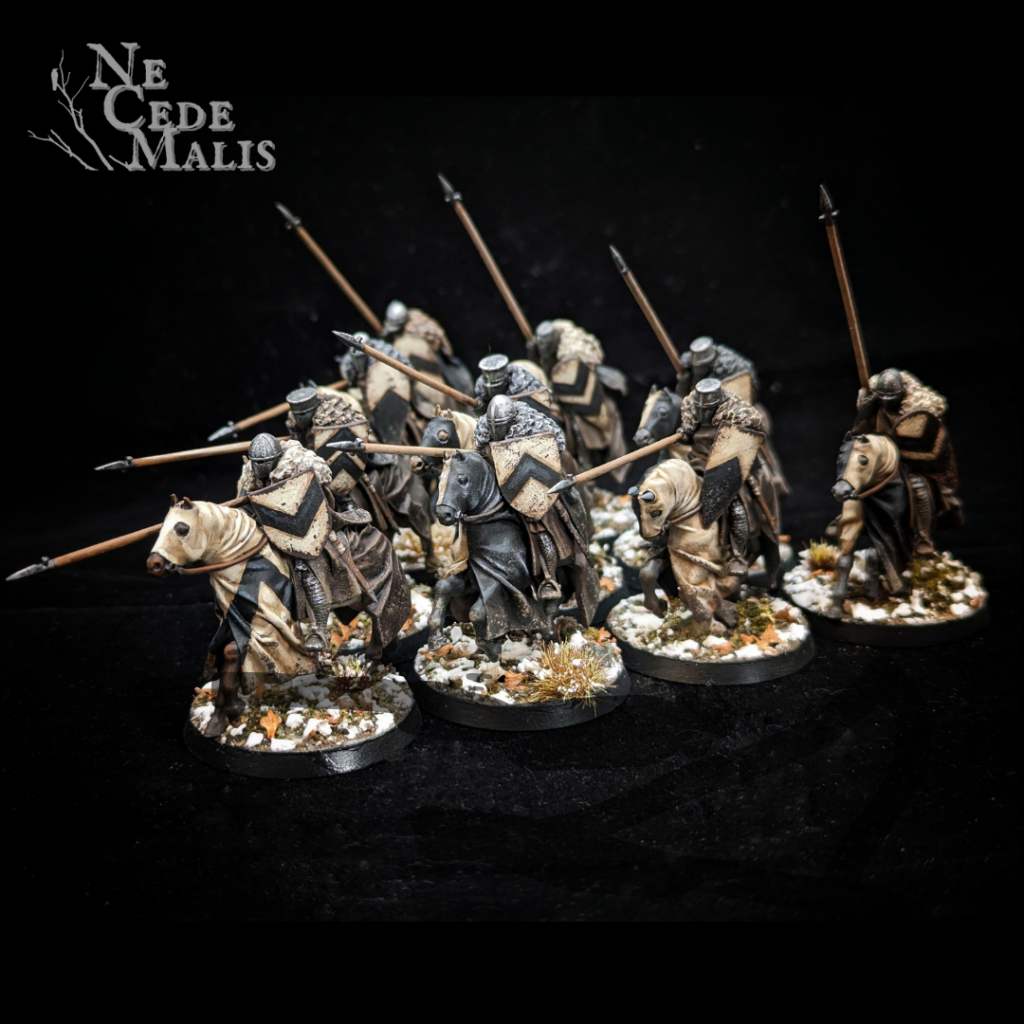
- Who they are: The Teutonic Order. The scourge of the Baltics. The white-robed German knights who earned infamy in the 12th, 13th and 14th centuries for waging some of the most heinously brutal and cruel wars on European soil seen at the time. Seriously, they were not good people! The Teutonic Order probably need no introduction, to be honest (they’re on the book cover!) but they’re a faction you’ll rarely, if ever, see played on the tabletop, as much due to the challenges of painting white as to their old faction rules. That will change with the advent of the 2024 FAQ.
- What they’re good at: This is a faction which changed substantially with the 2024 FAQ, so this paragraph will reflect their new playstyle. The Order don’t have an Activation Pool ability – they have an ability in its place called Servants of God, which lets you sacrifice your own models to gain additional Saga dice. Sounds risky? Well, not any more – look what else the Order got in the 2024 update: A new ability called Enlist (although the author believes “Subjugate” would have been more accurate as a name). This allows you to press-gang locals from the Baltic regions controlled by the Order into your service, replenishing casualties taken by your units. In any other faction, this would be a fantastic ability. For the Teutonic Order, it’s a game-changer.

This is the boost the Teutonic Order needed to pull its own weight. Really good change. Now, Servants of God, Sword Brothers and Dark Crosses, Pure Hearts are readily usable abilities – before, they’d have crippled your own units by sacrificing your own models for attack or defence dice. Now you just grimly smile, don your Teutonic greathelm, and send your Baltic conscripts to their doom without a second thought, knowing full well that you’ll press-gang fresh recruits in your opponent’s turn.

Ordensstaat crossbows can be pretty lethal. Credit – Ne Cede Malis
- What changed in the 2024 FAQ: Already covered (the big change is Enlist) but abilities like Dark Crosses, Pure Hearts are cheaper in terms of SAGA dice, and Din of Battle is finally, finally usable. The Order used to suffer from all of its abilities having some kind of malus; that’s no longer the case all the time. It remains to be seen how the Order will fare in its new form; they’ve changed so radically that some worry they may be too strong now – but they were roundly considered to be one of the weakest factions in the entire game of SAGA pre-2024, so it’ll be interesting to see how time plays out.

For the longest time, this was unusable. Now it’s really good.
The Moors
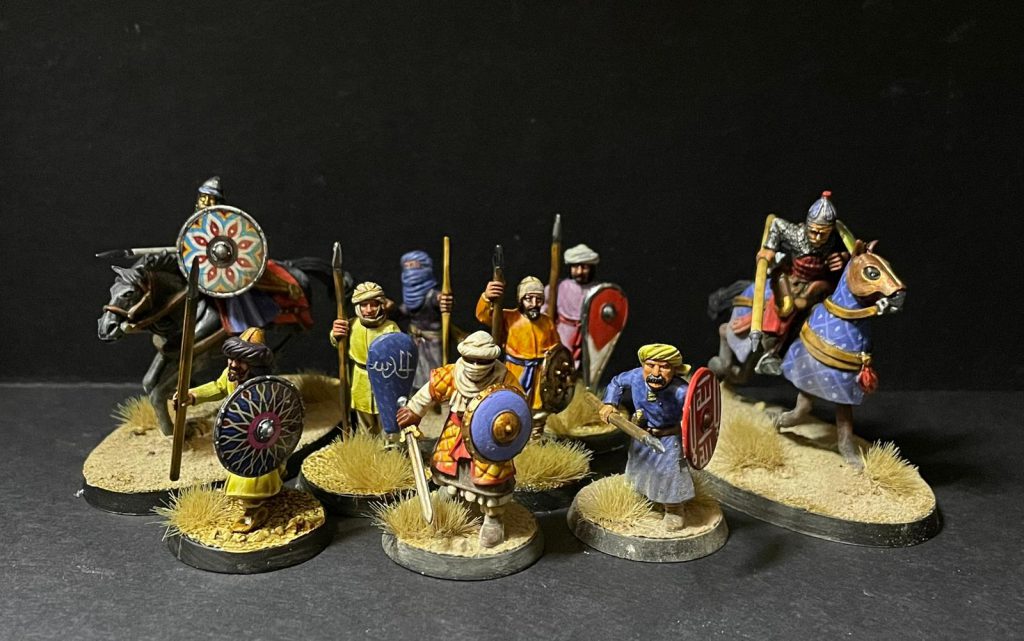
- Who they are: The Moors in SAGA are a catch-all faction for the various peoples of Northern Africa, specifically those who conquered large swathes of the Iberian peninsula. In the 12th and 13th centuries, the term often simply came to mean ‘Muslim peoples in Spain’; it would include ethnicities such as the Arabs, Syrians, Berbers and others, including the Andalusians.
- What they’re good at: The Moors are a really interesting faction who have undergone a lot of changes, which makes them a little tricky as their identity has (like the Teutonic Order) changed again in the 2024 FAQ. They’re a bit more “combined-arms” than the Saracens in that they’ve got a good reason to run infantry, namely that they can take crossbow levy (!!) and they have a singular ability affecting units on foot, Forest of Spears, which boosts your defence dice. The Moors also like to play with fatigue; Wholehearted grants you powerful bonuses depending on how many fatigues your opponent’s unit (and your own) have in melee, whilst Discord lets you place fatigue on an enemy unit at the expense of placing one on yours as well. Finally, Torrent of Iron lets you clear fatigue from your Hearthguard (for clever interplay with Discord if you can wing it), so they’re definitely a faction who benefit from finesse. Run these guys with a solid base of crossbow-armed levy, and a bunch of mounted Hearthguard and Warriors, both of which will use javelins.

Possibly the single ability which has changed the most across SAGA FAQs? - What changed in the 2024 FAQ: The author assumes you’ve played Moors with their 2021 FAQ update (yes, 3 years between FAQs), so won’t waste time going over old history. Essentially, the Moors lost a bit of flexibility with this update; Discord can only be used on 1 enemy and 1 friendly unit now (rather than up to 3) and Wholehearted is now melee-only, instead of shooting. They’re still worth playing, but you’re definitely playing a ‘finesse’ faction.

Now melee-only – but still a decent ability.
The Milites Christi
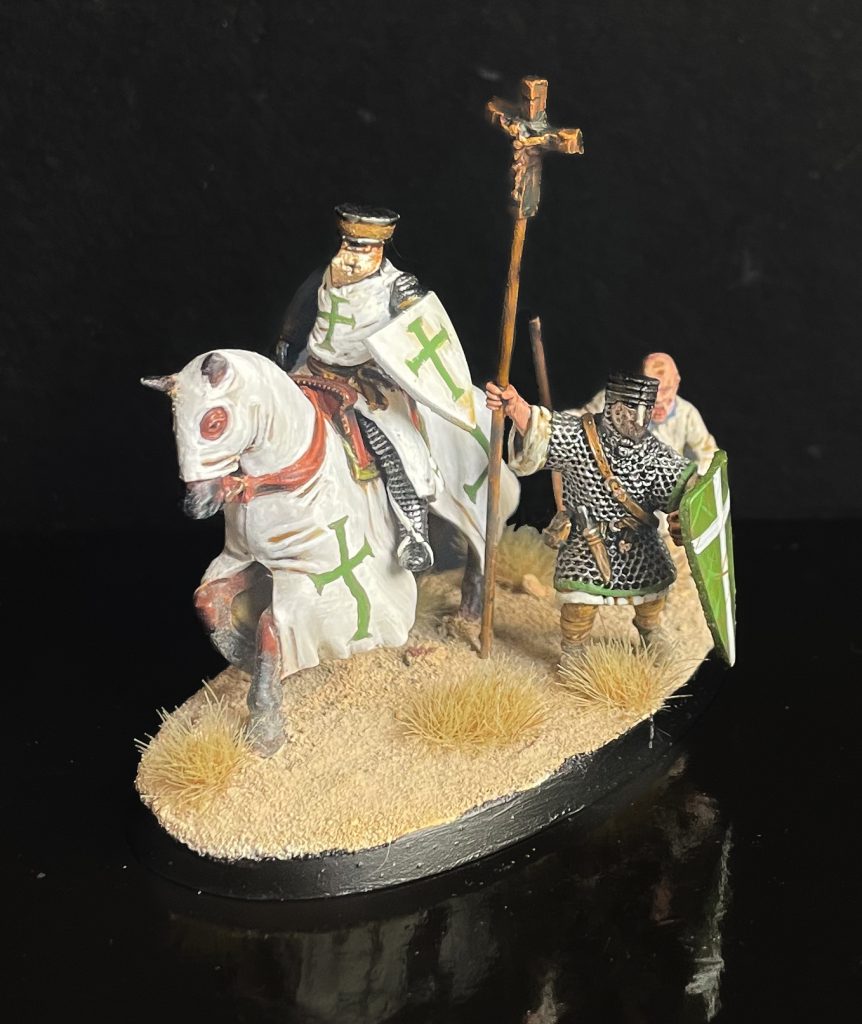
- Who they are: The Military Orders, the Soldiers of Christ, the Knights Templar, Knights Hospitaller, Knights of St. Lazarus and many more less well-known Orders besides. The Milites Christi are the faction for your archetypal ‘knightly order’ faction – they’re elite, they’re zealous, and they’re very few in number.

The backbone of a Milites Christi warband is in its knights – and the footmen who support them. Credit – Lenoon - What they’re good at: The Milites Christi are essentially defined by two things: they can take no Levy at all, and the Orison ability. Well, the first thing is self-explanatory. No Levies (outside of Mercenaries) means you’re really going to be running a small warband, and likely no more than a single unit of Warriors with ranged weapons (crossbows), so you’re not going to do a lot of shooting either. That’s fine – you’re all about heavily armoured knights closing with the enemy and dismantling them in hand-to-hand. Now, that’s where Orison comes in. This is an amazing ability that lets you store up SAGA dice on it, and then discard them to cancel enemy hits in melee or shooting. A lot of abilities on your board feed Orison with fresh dice, which is great, because you don’t have enough Hearthguard (knights) to sustain many casualties! The other abilities on your board are all about absolutely smashing the opponent in melee, such as Divine Aid, which adds extra hits to your attacks equal to the number of dice on Orison, and Deus Vult, which is the bane of Levy everywhere.

A good change to a now very solid ability. 
Victrix Medieval Knights. Credit: Lenoon - What changed in the 2024 FAQ: The Milites Christi benefited a lot from this FAQ. Divine Aid no longer triggers by removing your Orison dice and you’re now generating Orison dice much more easily via Resolve and Spilt Blood. Milites Christi, thanks to their low numbers and lack of shooting, will always be a finesse faction. But now they can hit hard and have the tools to protect their valuable knights until they can do their sacred duty. They’re looking like a winner – why not give them a try?

Now much easier to use and trigger.
The Mutatawwi’a

- Who they are: The Mutatawwi’a are not a faction built around nation-state boundaries; they’re meant to represent an army of Islam drawn across social and ethnic groups, united by the concept of armed jihad, and comprised of experienced warriors such as the Ghazis. In that sense, they’re a bit of a foil to the Milites Christi – and that impression increases when you see they can’t take Levies.
- What they’re good at: The Mutatawwi’a are pretty straightforward in composition; you’ve got a Warlord and Hearthguard who can be on foot, on horse, or on camels(!), and warriors who can take bows or just hand weapons. That’s it! These guys are all about delivering vengeance to the infidel at the point of a spear – so they’re entirely focussed on getting into melee and causing absolute havoc, with little regard for their own lives. In SAGA, that makes them a tremendously fun faction to play with (and against) – every single one of your games will be an absolute bloodbath. You’re swimming in melee abilities, with Mortal Blow, Bloodbath and Fight to the Death usually dropping your own armour in exchange for gaining extra dice or auto-hits on the opponent; and your Like Djinns ability allows a foot unit to charge L (12″, in SAGA parlance) which absolutely will catch out unwary foes! Your Hearthguard, if mounted on camels, will be the bane of enemy cavalry (don’t forget camels put enemy horses at -1 to hit in melee). So what’s the downside? Well, as alluded to, most Mutatawwi’a abilities give you a hefty bonus in exchange for a penalty, usually one that sees a steep price in your warriors’ lives. So you’re here for a good time, not a long time.

Teutons aren’t the only ones getting fresh recruits! This will help your zealous warriors stick around longer.
- What changed in the 2024 FAQ: Just one ability – Jahannam – but like the Teutonic Order rework, it’s a banger. Now you can bring back a couple of your own Warriors (or possibly Hearthguard) every turn if you roll well enough. That’s really not to be sniffed at for a faction which sustains high casualties in every engagement. Give the Mutatawwi’a a try – they’re an absolute blast.
The Pagan Peoples

- Who they are: The name says it all – the last peoples of non-Abrahamic religion to live in Europe, these are mostly the tribes of the Baltics, northern Europe and the lands surrounding the Rus principates in the 11th-13th centuries. “Pagan” was seen as a common denominator, but the reality is these people were pretty diverse; luckily, this is a faction which can also be pretty diverse on the tabletop.

Pagan Peoples are a perfect excuse to re-use your Age of Vikings models; after all, they’re (mostly) pagans! Credit – Bair - What they’re good at: Often referred to as the “forest faction” or the “terrain faction,” the Pagan Peoples are a faction that do like a lot of terrain on the board. They’ve got exceptional variety in their faction equipment options, with Warlords and Hearthguard able to be on foot, or mounted, with various options for javelins and heavy weapons. Warriors can take bows or hand weapons, and levies must take javelins. Even with the 2024 rulebook changes to javelins, this still gives the Pagan Peoples a lot of flexibility between ranged and melee, and their access to cavalry means that they can keep up with the fastest factions. This is reinforced by abilities like Taara Avita which give you a bonus to ALL melees or shooting attacks (you have to pick) in a given turn – very very powerful! Also, abilities like Puhajarv push you toward a warband of lots of smaller units, with the ability to rapidly generate SAGA dice. It’s very rare to see a Pagan Peoples warband run out of SAGA dice, which in itself makes them very dangerous to face. They’re also really hard to root out of cover; Meza Mate simulates the ability of the Baltic Pagans to hide in forests and woods until the opportune moment and then jump out to ambush their enemies, and can be really, really frustrating for an opponent on a terrain-heavy board. For this reason, the Pagan Peoples are often considered the “terrain faction” in Age of Crusades; you’ll want as many forests and marshes on the board as you can get!

A Pagan priest in the woods. Credit – Ne Cede Malis
- What changed with the 2024 FAQ: A mixed bag – Taara Avita used to apply to both shooting AND melee, so it’s probably fair that you have to pick one or the other now. On the other hand, Puhajarv is much easier to trigger now. Horses for courses – more SAGA dice generally means more power on the tabletop, so maybe overall the Pagans come out ahead.

Much easier to use now.
The Polish
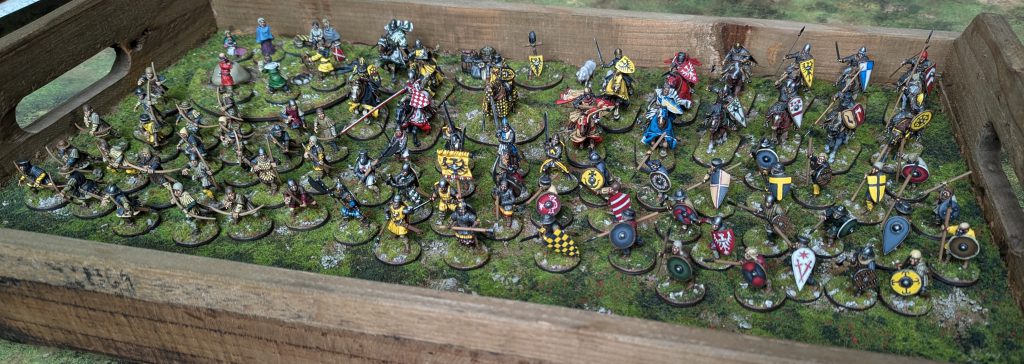
- Who they are: A rare example of a faction which is not catch-all, geographically speaking, but focused on a specific national group – the Polish are, of course, the faction for the Kingdom of Poland, beset on all sides by looming conflicts with the Bohemians, the Germans (or the Holy Roman Empire, to be accurate), the Teutonic Order and even the Rus principates and the Mongols.
- What they’re good at: As that last paragraph might suggest…the Polish are a faction which play very much into the defensive archetype, although not necessarily in a historically accurate way. Whilst medieval Polish armies fielded a lot of cavalry, in SAGA you’ll only run a handful of mounted nobles (your Hearthguard and Warlord) whilst the bulk of your force will be comprised of Warriors with heavy weapons and Levies split between bows and hand weapons. That’s because two of your abilities, Hold the Line and Voivode, boost the defensive and fatigue-regenerating capacity of your foot units massively.

Still very strong. The Polish are good at picking a corner and grimly holding it come what may. Arguably, they can pack a decent punch too with Specialists boosting your heavy-weapon Warriors and bow Levy decently, and Szlachta now makes your Hearthguard hit very hard on the charge (although it is expensive).

Hasn’t changed per se, but this is a great ability – this will wreck an opponent’s plans if played at the start of a critical melee. Finally, you’ve got a great ability in The Clash which lets you call a halt to the SAGA abilities phase of a melee – effectively stopping the opponent from playing any more abilities! Very useful when you’re the attacker.

Polish warriors can hit really hard with their heavy weapons, backed up by the Specialists ability. Credit – Dan Neal, Ohio Warlords - What changed in the 2024 FAQ: The Poles are a faction still in debate. They were regarded as pretty weak before the FAQ, and responses to their current state are still a mixed bag. While Hold the Line is still a very usable ability (now it generates buckets of defense dice, rather than giving your unit Resilience 2 or 3), there’s still a lot about the faction which feels tricky to use. They’re a faction for veteran SAGA players who really know how to get the most out of their abilities.

Plays differently now, but still a very strong defensive ability.
The Eastern Princes
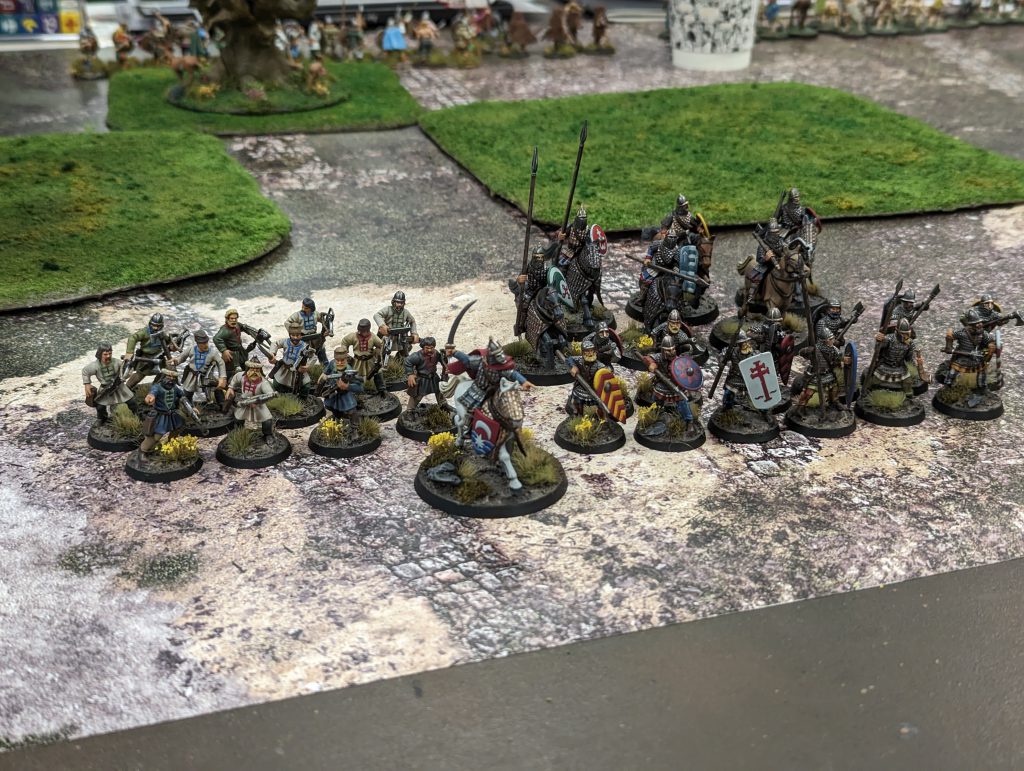
- Who they are: The Eastern Princes cover a huge geographical area. This faction sub-divides into two (much like Crusaders) and covers the Rus principates (Novgorod, Kyiv, Moscow and further east) and the Lithuanian dukedoms that faced down the crusading armies of the West – and eventually won, after centuries of bloodshed. The author must be honest; the Eastern Princes are his favourite faction in SAGA for the sheer flexibility their playstyle offers, although it must be said that historically they’re a very weird mishmash of totally distinct cultures. It does feel rather as though the authors drew a line east of the Elbe River and said ‘Everything past this point will fit into one faction’. You have Rus city militia, mounted Lithuanian nobles with javelins, and even – very anachronistically – an early war wagon fitting into the same faction. Historically accurate this ain’t!

War wagons. These are SO MUCH FUN. - What they’re good at: The Princes are exceptionally good at two things: hitting with the force of a whirlwind in melee, and playing mind games with their opponent. Abilities such as Drug, Ad Nauseam and Lord of the East turn your Hearthguard (and sometimes Warriors) into absolute blending machines. Warriors can also be pretty survivable thanks to the underappreciated ability that is Brothers in Arms. Very few things will stand up to a correctly timed, well executed Eastern Princes charge. On the other hand, you’ve got Hesitation and Timorous Advance to absolutely ruin your opponent’s day – the former by generating bonus SAGA dice for you if your opponent triggers an ability you choose, and the latter, well, let’s just say it’s the author’s view that this ability counters entire factions. It’s an amazing ability that takes experience to use properly, but when used right, you can effectively shut off enemy units from using their SAGA abilities (due to counting as Mercenaries). And this is to say nothing of the War Wagon; an incredible unit that generates SAGA dice and also forces your opponent to redirect their charges toward it if it’s in range. You can really change your opponent’s entire gameplan with this unit, and it’s a wonderful modelling opportunity to boot.

War wagons – as much fun to paint as they are to play. Great centrepieces and a real headache for the opponent! 

- What changed in the 2024 FAQ: The Princes took a slight nerf from the 2024 FAQ. Drug is no longer the absolute bucketload of extra dice it once was, although Ad Nauseam has become slightly easier to trigger. However, their core playstyle remains the same – misdirect and draw out the enemy to overextend before committing to devastating charges.

Not as good as it used to be, but still decent.
The Saracens
- Who they are: The Saracens represent the varied and diverse peoples making up the Seljuk Empire and its successor dynasties, from Anatolia, Syria, Iraq, Iran and the wider Levant. Whilst a faction like the Mutatawwi’a attempts to represent the “armies of Islam” in a monolithic sense, the Saracens reflect the Arabic and Turkish peoples inhabiting the Levant who inherited the Seljuk legacy.
- What they’re good at: Whilst the Mutatawwi’a and the Moors can be fielded with a mix of infantry and cavalry, the Saracens are a mostly mounted force, with their Hearthguard and Warriors having access to composite bows whilst on horseback, with their Levy exclusively bow-armed. They’re a very fast faction known for withering volleys of bowfire; Thoroughbred is a great ability for quickly redeploying multiple mounted units, whilst Armour Piercing Shafts and Brotherhood boost your composite bows.

This is going to see A LOT of play. The Saracens also offer a lot of interplay between units, with Brotherhood setting up a unit to charge a foe who’s just been the victim of a Saracen volley, and Coordination and Scourge of the Infidels wreaking havoc on the foe in melee. The Saracens are another ‘finesse’ faction which moves fast, shoots well, hits hard in melee, but are something of a glass cannon – being mostly mounted, you’re very vulnerable to enemy missiles or to your units being caught out in the open by Crusader heavy cavalry.

Saracen horse archers can be deadly. Credit – Ne Cede Malis - What changed in the 2024 FAQ: The Saracens got much-needed buffs across the board. Armour Piercing Shafts is a LOT easier to trigger now and is going to be an auto-play ability for most players. Thoroughbred and Multiple Shots are now much easier to trigger, whilst Appeal to the Prophet is a completely different ability. Before, it was one of the most expensive abilities in the game (costing 2 Rares) and gave your whole army Resilience 2. Now it simply allows you to activate a foot unit for free when you activate a mounted unit within range. Less powerful in brute terms, but really adds to the Saracens’ ability to redeploy fast, meaning you’re less likely to be caught out in the open without infantry support. They’re looking really fun after the 2024 update – give them a try!

Saracens are even more mobile now – and their infantry can keep up!
The Spanish
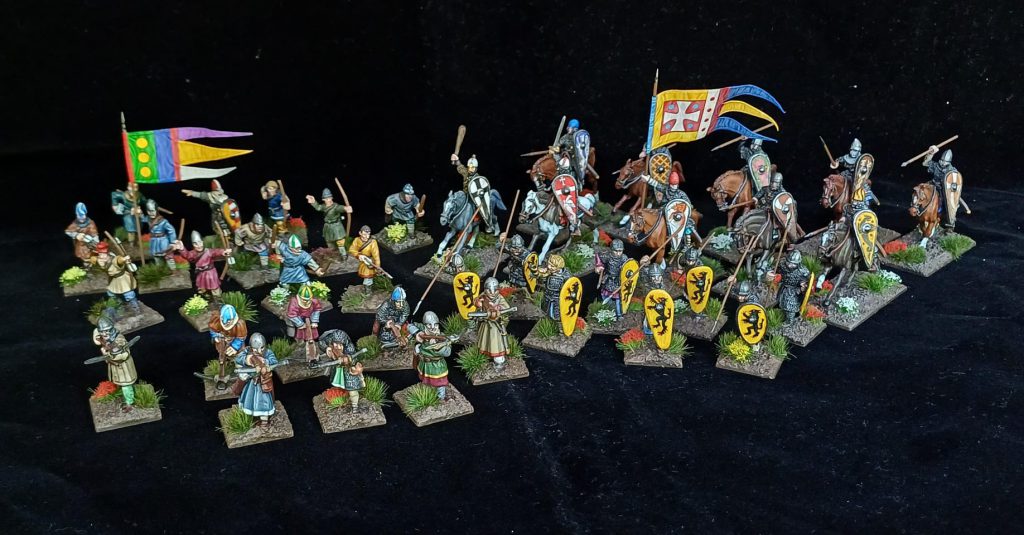
- Who they are: The Christian kingdoms and petty fiefdoms of the Iberian peninsula which took the Cross in the 11th century, the Spanish faction in SAGA represents the period known as the Reconquista. This is the period where the Spanish lords and kings decided to retake their peninsula from the Moorish peoples who had conquered much of it during the early Medieval period, and as a result, they offer an interesting ‘hybrid’ playstyle reflecting their Moorish influence.
- What they’re good at: The Spanish nobles, the Warlord and Hearthguard, are exclusively mounted, and their Warriors are either on foot or mounted with javelins. Levies are bow or javelin-armed, with a single unit able to take crossbows. The Spanish board really lends itself to tons of javelin-armed, horse-riding Warriors, with Jinetes granting plenty of movement to your Warriors and Lances and Javelins and Reconquista turning them into blending machines. You’ve also got “mind game” abilities on the level of the Eastern Princes; Treachery can make an opponent discard ALL their attack dice(!) if fatigued, Stunned can cancel a critical enemy activation outright, and Chaos is brilliant for throwing an opponent’s battle plan into disarray.

Some beautiful Norman cav – great proxies for Spanish jinetes. Credit – Ilor
- What changed in the 2024 FAQ: The main change to the Spanish in this FAQ…is actually not in the FAQ, it’s in the rulebook, and it’d be criminal not to mention it. The change to how javelins work (essentially, you have to choose between the ‘free’ shot javelins generate, or regular dice-based shooting activations) has really hit the Spanish quite hard. You’ll have to be a lot more careful about setting up your shooting activations now. They’re still a hard-hitting faction but you can’t get by purely on volleys of javelins any more. You can also no longer use Iberia to shoot during your opponent’s turn. Happily though, you’re able to use Jinetes to redeploy your units quickly and clear some fatigue off them, so there’s that. The Spanish are another ‘glass cannon’ finesse faction who will really reward players with a strong grasp of the rules seeking an unusual faction.

Still decent.
The Mongols
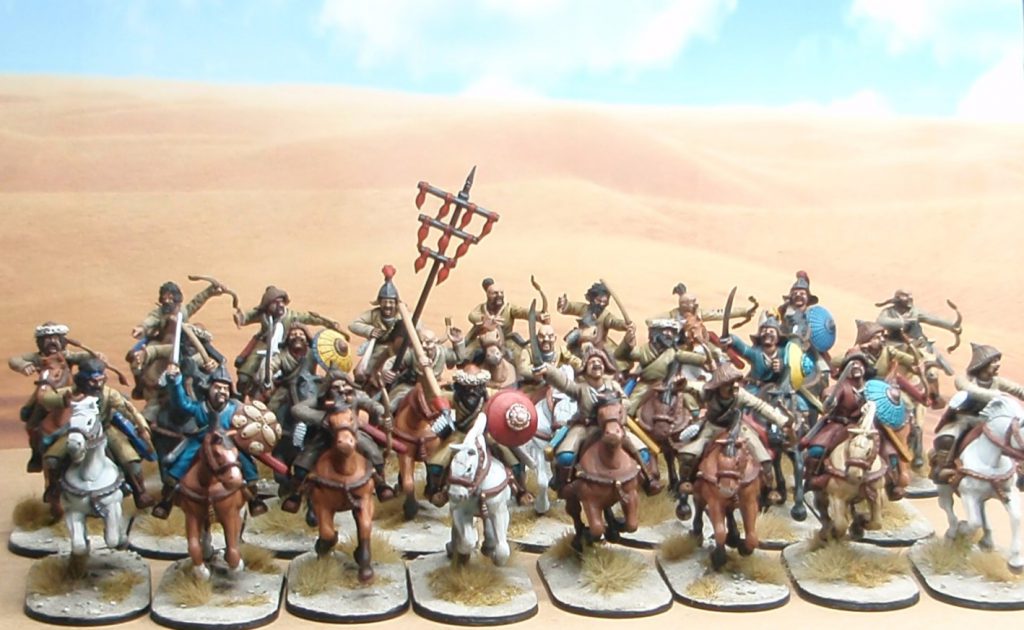
- Who they are: Ending on a strong point, we’re closing this article with The Hu.

Blaring out ‘Wolf Totem’ by The Hu is the correct way to play Mongols. Credit – The Hu, Wolf Totem (Official Music Video) Okay, I’m being facetious, but if you don’t feel the urge to drink goat’s milk, throat sing to Mongolian metal and ride bareback across the Steppe while playing these guys, what are you doing here?
- What they’re good at: As you’d expect from history, the Mongols are an unholy terror to deal with. They’re one of the fastest cavalry-based factions in SAGA with abilities that let them move and withdraw without much fatigue, and they hit like a ton of bricks. They’re all about speed, shock and sowing terror in the foe, and there’s no better way to represent this than the (almost unique in SAGA) ability called Scorched Earth, which literally represents your warriors burning down a piece of terrain the enemy are hiding in. Cinematic! The rest of their abilities speak for themselves by name alone; Scourge of the Steppes, Armed Hordes and Master of Men all make your Hearthguard, Warriors and Heroes hit with the fury of the steppe. The Mongols’ unique unit, the War Drummer – a camel-mounted version of this guy – is basically an extra source of We Obey, which means you can spend precious SAGA dice on the abilities that matter rather than saving them for activations.

As the ‘Master of Men’ ability suggests – Mongol warlords can hit really hard. Credit – @theintermittentpainter 
That’s one happy camel. Credit – @theintermittentpainter - What changed in the 2024 FAQ: The Mongols had a mixed reaction initially, as the War Drummer – who used to activate your entire army – took quite a nerf. However, this is offset by the buffs to Short Ranged Volley, The Bow and the Lance, Armed Hordes and Scourge of the Steppes, all of which are either flat out more powerful now or easier to trigger.

Still a great reason to take War Drummers! As a result, the Mongols are a surprisingly punchy army; whilst they have a lot of shooting power in their composite bows, it’s actually in melee that they are likely to do the most damage (as Tengri intended). What “hurts” them is that there aren’t many manufacturers of Mongol miniatures out there, so that’s your main obstacle to overcome if you choose to ride with the Khans.

Yep, Mongol elites hit like a truck. 
Mongol hearthguard – now even deadlier. Credit – @theintermittentpainter
The Rest – Old Friends, New Enemies and A Matter of Peace and Faith
And as if all that’s not enough, Age of Crusades is a bit of a treasure trove when it comes to extra factions. You’ve got the four bonus factions in ‘Old Friends, New Enemies’ who allow you to run Age of Vikings and Age of Invasions boards, and the ‘A Matter of Peace and Faith’ section of the book gives you extra ways to run your models if you fancy playing the Albigensian Crusade. Just quickly, here’s a breakdown:
- The Cumans: The eponymous Kipchak Turk-descended peoples from the steppes north of the Black and Caspian seas. They use the Hun board from Age of Invasions, and have been updated by the 2024 FAQ such that their Levy units no longer benefit from ‘Hun-only’ abilities on the Hun board (which is fair and balanced). Great, strong faction with a lot of playability; give these guys a try out if you’re a fan of the steppes.
- The Pagan Raiders: A catch-all for the Balts and Wends who raided Christian lands in Northern Europe such that Scandinavia and the German princedoms declared a crusade against them. They use the Saxon battle board from Age of Invasions, and are (in the author’s opinion) actually more interesting than the core Saxon faction beacuse they have access to heavy weapons, making them hit like a truck. They can’t take Levies though.
- The Cilician Armenians: Here’s a faction you don’t often see on the tabletop! They use the Last Romans board from Age of Vikings, and favour a very horse-heavy build with a single unit of mounted warriors taking composite bows. They won’t win any competitions but they’re great fun for modelling purposes.
- The Árpádian Hungarians: Relegating the Kingdom of Hungary to the back of the book is, in the author’s view, a real shame, as there’s so much in Hungarian history to draw from (and these guys withstood the fury of the Mongols in a series of brutal battles in the 13th century that the rest of the world often doesn’t hear about). Based on the Norman board from Age of Vikings, their shtick is half their Warrior models can take composite bows. That makes them decently shooty, so while they’re not at the top of the pack, they’re definitely a fun faction to try out.
- The Cathars: A reskin of the Crusader board, the Cathars are – or were – a more peaceful sect of Christianity which aroused the Church’s ire by refusing their doctrine. In game terms, these guys have no Levies, which means they’re running their board as if they were Baltic Crusaders with the added complication that your Warlord can be swapped out for a Priest with We Obey and your Hearthguard can be swapped out for Faydits – more lightly armoured knights who get a bonus in melee against…
- De Montfort’s Crusaders: The soldiers of the Church who wiped out the Cathar movement and butchered them to the last. Similar to the Cathars, these guys get no Levies, although that’s less of an issue as they use the Milites Christi board. Your Warriors can take bows though, so this can be a much shootier warband that a regular Milites force; and you’ve got access to an Inquisitor, which is a Priest that stacks fatigue on your enemy and inspires your troops to hit slightly harder in melee.
And that’s it – Age of Crusades at a glance. There’s a lot more to dig into on each faction, so we might go into more detail on specific factions at a later date, but for now that’s enough to get started. Which faction piqued your interest the most?
Have any questions or feedback? Drop us a note in the comments below or email us at contact@goonhammer.com. Want articles like this linked in your inbox every Monday morning? Sign up for our newsletter. And don’t forget that you can support us on Patreon for backer rewards like early video content, Administratum access, an ad-free experience on our website and more.

